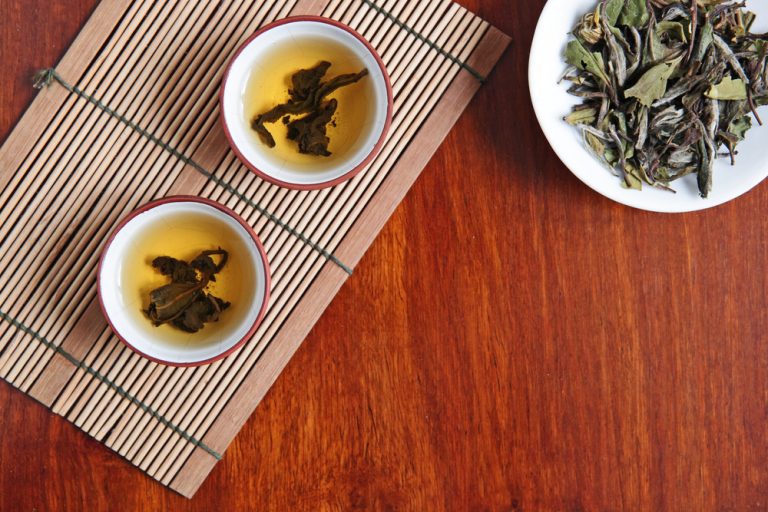Oolong tea falls somewhere between a green tea and a black tea. Now, if this is the first time you’re hearing about oolong tea, there may be many questions running through your mind like what is oolong tea, what does oolong tea taste like, or what is oolong tea good for? We’re here to answer all these questions. To make oolong tea, relatively mature leaves of Camellia sinensis plants are subjected to partial oxidation. The degree of oxidation varies anywhere between 10-80%, depending on the style of oolong tea being produced. Oolongs that are oxidized for a short period of time tend to resemble green teas in flavor while oolongs that have been oxidized more than 50% are closer to a black tea.
Tea producers prefer mature leaves in making oolong because they contain mellow flavors and less tannins. Slight oxidation is all that is needed to bring out the flavors of the leaf. However, the overall process of making an oolong is extremely intricate, labor-intensive, and time-consuming. Every step is closely monitored and controlled. Often, the steps involved in making an oolong tea are repeated multiple times before the desired amount of bruising and browning of the leaves is achieved.
How is oolong tea made?
Oolong tea processing is a complicated activity and one of the most time consuming and labor intensive. It follows these steps (in order):
Withering/Wilting: The fresh leaves are left out in the sun and open air to remove excess moisture.
Bruising: Once the leaves are wilted, they are tossed in a tray in order to break them, hence quickening the process of oxidation.
Fermentation: Next, the leaves are let be so that their chlorophyll is broken down and tannins are released.
Fixing: Finally, the tea is heated to stop the enzymes responsible for oxidation. The flowery/fruity flavor of the oolong tea develops as a result of being semi-oxidized.
Types of oolong

All oolongs are broadly categorized in one of two distinct styles – small, wrap-curled oolongs (such as Tieguanyin oolong tea) and long, strip-style curly oolongs (such as China’s famous Da Hong Pao Oolong tea). The latter is the more traditional and more commonly produced style of oolong tea.
Oolong tea benefits:
The health benefits of drinking oolong tea include its ability to reduce chronic health conditions such as heart diseases, inflammatory disorders, and high cholesterol levels while also providing vital antioxidants and promoting superior bone structure. Now, to many it may come as a surprise but oolong tea caffeine content is much lesser than that of green and black tea.
While drinking oolong tea for weight loss is often overlooked, the tea, however, can play an important role in your weight loss efforts by being a calorie-free way to rehydrate.
There are a variety of oolong tea types like the Chinese oolong tea, Dragon Eye oolong tea, Wuyi oolong tea and many more. Therefore, oolong tea tastes depend on the type of tea used. But for the most part each oolong type has its own sweet and fragrant aftertaste.
How do Indian oolongs compare with the Taiwanese oolongs? Read Frank Miller’s review here.
Buy Oolong Tea from Teabox here

Comments are closed.